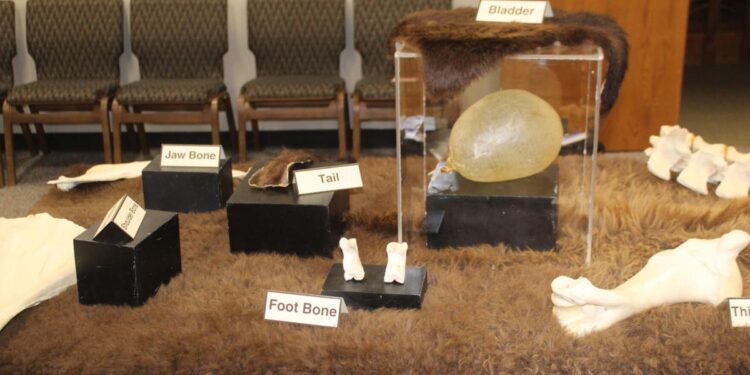You may have heard his name from the Trailway linking Lawton to Altus. You may have seen his home in Cache.
But at the Chisholm Trail Heritage Center, 2150 Chisholm Trail Parkway in Duncan, you can learn more about Quanah Parker’s life with a new pictorial exhibit from now until Aug. 12.
Edie Stewart, educational instructor for CTHC, said Parker is considered the last Comanche chief.
“He surrendered (with a) very small band of people he was leading in 1875 at Fort Sill, one of the last groups of people to surrender and bring his people to Indian Territory,” Stewart said.
Stewart said his mother, Cynthia Ann Parker, was a white woman who was taken captive when she was 8 or 9 years old in a raid on Fort Parker in 1836.
“I don’t know if anyone knows for sure why, but she assimilated herself to life among the Comanche people,” Stewart said. “In 1860, at the Peace River massacre, she was taken captive by Texas Rangers, who saw her face and realized that she had blue eyes and that caused them to think that she was a white woman and not a Comanche woman.”
Stewart said Cynthia was captured with her young daughter, Prairie Flower. The Rangers found out that she was married to a leader of the Comanches, Peta Nocona, with three children: Quanah, Pecos and Prairie Flower.
Stewart said Parker proved himself to be a leader among his own people.
“After his surrender, he was appointed as the last chief of the Comanche people by the federal government,” Stewart said. “His ability to communicate and lead and his personality all lent itself to him being able to be that go-between person between the federal government and the Comanche people.”
Stewart said Parker had many wives and raised a large family outside of Cache.
“Even though he assimilated to the white man’s world, he held on to a lot of the culture that he had grown up with and was able to be a part of both worlds,” Stewart said.
Stewart said the exhibit is a pictorial history.
“The pictures start at Fort Parker where Cynthia Ann lived and takes us through Quanah’s life, not a lot of his life prior to coming to Indian Territory, but little bits that we know from history,” Stewart said. “Then all the way through his life as the last Comanche chief all the way to his death.”
Stewart said some of the paintings are a part of the Garis Gallery of the American West, which is part of the Chisholm Trail Heritage Center. Other paintings are on loan from many other sources. The bison display is a part of the Educational Center at Chisholm Trail Heritage Center.
Stewart said one of Chisholm Trail Heritage Center’s educational summer themes is Quanah Parker.
“The reason why our executive director wanted us to have this exhibit this summer is because our education program’s theme for the summer is the Comanche, the bison and Quanah Parker,” Stewart said. “As children come through the museum this year, we have this history lesson that includes those three parts. We teach the children about that and having this exhibit here expands the information about Quanah Parker.”
Stewart said the exhibit is important to catch a glimpse of the nation’s history at the time.
“The Indian Wars leading up to the removal of many tribes and placement in their respective reservation areas in Indian Territory, which then led to the land runs and eventual settlement by European descendants in what would be Oklahoma,” Stewart said. “To just have this little part of history for people to see, appreciate and maybe learn a lot of things that they’re not familiar with, I think that that’s really important.”
For more information, contact the Chisholm Trail Heritage Center at (580) 252-6692 or go to onthechisholmtrail.com/quanah-parker/.
Want to reach a local audience and grow your business?
Our website is the perfect platform to connect with engaged readers in your local area.
Whether you're looking for banner ads, sponsored content, or custom promotions, we can tailor a package to meet your needs.
Contact us today to learn more about advertising opportunities!
CONTACT US NOW





